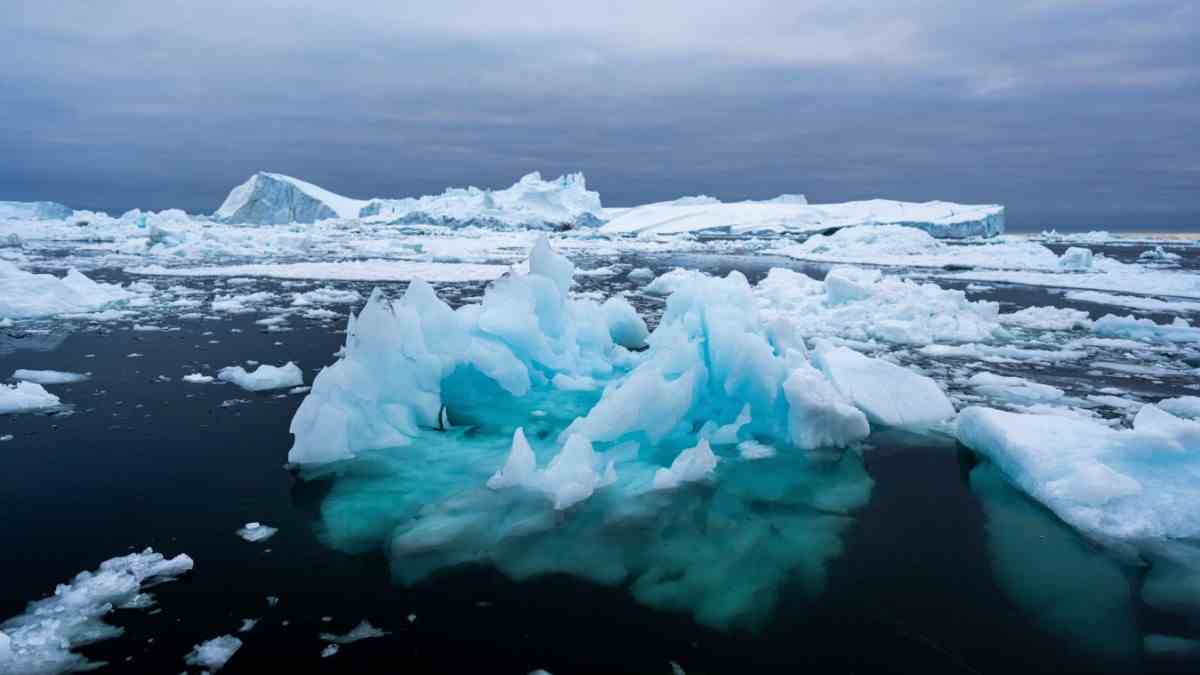According to the UN Meteorological Organization (WMO), four indicators of climate change reached new record values last year: the concentrations of important greenhouse gases, the rate of sea level rise, the temperature of the oceans and ocean acidification. According to the “Climate Status Report 2021”, the past seven years have also been the seven warmest since records began.
The results clearly showed that human activities are leading to planet-wide changes, the WMO said on Wednesday. “It is only a matter of time before we see another warmest year on record,” said WMO Secretary General Petteri Taalas.
The global average temperature in 2021 was around 1.11 degrees above pre-industrial levels, according to the new report. This is slightly cooler than in some previous years, which, according to the climate researchers, is mainly due to the influence of the La Niña weather phenomenon, which was observed in 2021. This ensures, for example, dry conditions in South America and more rain in Australia, leading to slightly lower temperatures globally. The warmest year to date was 2016, with a mean temperature of 1.2 degrees above pre-industrial levels.
The oceans are more acidic than they have been in at least 26,000 years
However, this does not mean that climate change is pausing. Around 90 percent of the excess heat in the atmosphere is absorbed by the oceans, which continued to warm in 2021. According to the WMO, the heat content in the upper 2000 meters of the oceans reached a new high last year, and the trend is likely to continue. Warmer water expands more than colder water, so sea levels continue to rise, now at a rate of 4.5 millimeters per year. That’s twice as fast as in the 1990s. In individual regions such as the southwestern Pacific, the increase is particularly rapid.
According to the WMO, the pace of ocean acidification has also reached a new record. Around 23 percent of man-made carbon dioxide emissions are absorbed by the oceans, where the carbon dioxide (CO₂) reacts with water, leading to acidification. According to the latest status report by the Intergovernmental Panel on Climate Change (IPCC), the acidity of the oceans is at its highest level for at least 26,000 years. As a result, the capacity of the oceans to absorb more CO₂ is also diminishing.
The concentrations of the most important greenhouse gases carbon dioxide, methane and nitrous oxide in the atmosphere have recently reached record levels. The figures from the WMO report on this are from 2020. However, real-time measurements in Hawaii indicate that the trend has continued in 2021.
The climate status report also points to a number of extreme weather events that took place in 2021. The west coast of North America experienced exceptional heat waves in June and July. In Lytton, Canada, 49.6 degrees Celsius were measured on June 29, around five degrees more than the previous Canadian temperature record. A day later, a forest fire largely destroyed the city. On August 11, a new European temperature record of 48.8 degrees was set in Syracuse, Sicily. A heat wave in Greenland in August led to an extraordinary ice melt there – for the first time since records began, it rained at the highest point of the ice sheet at an altitude of 3216 meters.
Last week, the WMO warned in a forecast that the global average temperature could be more than 1.5 degrees above pre-industrial levels, at least briefly, by 2026. According to the Paris Agreement, global warming should be limited to this mark in the 21st century. According to the WMO, the probability that the target value will be exceeded for the first time within the next five years is around 50 percent.

